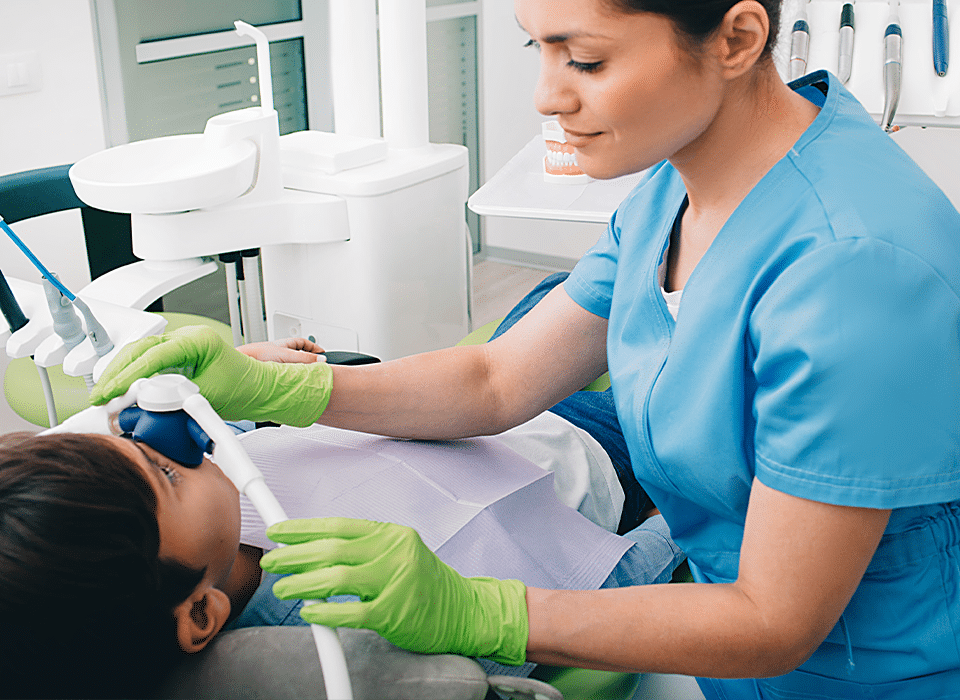Nitrous Oxide Sedation for Kids
Nitrous Oxide or “laughing gas” is a useful sedative often used when a child experiences anxiety while visiting the dentist. It is generally used if your child has “butterflies in his/her stomach.” Nitrous oxide is a very safe and non-allergenic gas that is mixed with oxygen.
How do you Administer Nitrous Oxide to Kids for Dental Treatment?
We administer the gas by a mask and ask our patients to breathe regularly. This allows the child to relax but remain conscious so they can respond to basic commands during the procedure. This level of consciousness also allows us to monitor our patients throughout the entire procedure. Once the treatment is completed, the child may continue to receive oxygen without the gas for a few minutes. This allows us to continue monitoring the child and time for the gas to leave the child’s system.
Is Nitrous Oxide Sedation Necessary for all Kids?
There are times when nitrous oxide may not be beneficial. If a child is severely anxious, experiencing a stuffy nose, or does not respond well to wearing a mask, nitrous oxide may not be an effect sedative and other approaches will need to be discussed with you and your child. Our dentist will review the child’s medical history prior to the use of the gas or any other sedation methods.
Nitrous Oxide or “laughing gas” is a useful sedative often used when a child experiences anxiety while visiting the dentist. It is generally used if your child has “butterflies in his/her stomach.” Nitrous oxide is a very safe and non-allergenic gas that is mixed with oxygen.
Is nitrous oxide safe for my child?
Nitrous oxide is usually the preferred method of sedation for children compared to deeper levels of sedation. It is a safe, non-toxic gas that helps with treatment.
How long does nitrous oxide last?
Nitrous oxide is a quick acting gas that is eliminated quickly with a flush of 100% oxygen at the end of the procedure. Normally a five-minute flush eliminates any lingering nitrous oxide in the lungs.
Who should not get laughing gas?
Nitrous oxide is normally safe for most people, but medical history is important.
It is contraindicated for people with:
- Chronic obstructive pulmonary disease (COPD)
- Methylenetetrathydrofolate reductase deficiency (MTHFR gene mutation)
- Cobalamin deficiency
- History of substance abuse
What are the common side effects of nitrous oxide?
Although uncommon, nausea, vomiting, and fatigue are common side effects of nitrous oxide.


